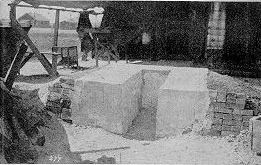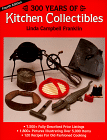
Firing Field Bake Oven No. 1
Excerpted from the 1916 edition of the Manual for Army Bakers
With seasoned wood baking temperature can be obtained in from one and one-half hours to two hours after the fire is built, depending upon the dryness of the ground. If time is no object, it will be better to use a slow fire at first, in order to bake the trench walls slowly. If the firing trench is dug in sandy ground, the walls of the fire pit, unsupported, will not last more than 48 hours. It will be necessary to revet them with some heat-resisting material. If the field bakery is to be set up for a short period, from 10 to 14 days, the walls can be reveted with galvanized-iron sheeting, held in place by iron pins driven into the ground, or one layer of ordinary building brick can be used.
If the firing trench is dug in ordinary loams, the trench will last from 4 to 7 days without reveting. If dug in gumbo or adobe, the trench will stand up from 15 to 25 days, depending upon the care exercised in firing. Careless handling of firewood will cut the life of any unreveted trench in half.
 Fire trench
foundation at a permanent camp
Fire trench
foundation at a permanent camp
If the field bakery is to occupy a camp site permanently, it is best to set up the ovens over a fire trench foundation of fire brick. See appendix B. (Ed. note: Appendix B only includes this photograph and a fire pit drawing.)
Wood usage
Each unit, when operating continuously, will consume three-eighths of a cord of hard wood per day in summer; one-half per day in winter. It requires almost as much wood for the normal day's output of 10 runs as it does to bake continuously.
Return to Bread Baking in World War I Army
Bibliography
Deitrck, Capt. L.L., ed. Manual for Army Bakers. War Dept. Doc. 563. Washington: GPO, 1916. 123pp. This material is taken from pages 87-9 and 99-100.
October 1999
| Bulletin Board | Keyword Search |
| Bookstore | Links |
| About Us | Recent Additions |

